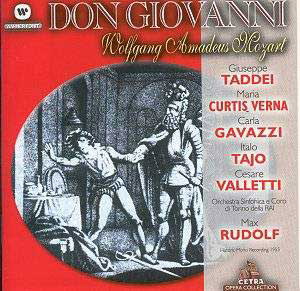 Composer: English
Composer: English
Works: Persiflage (Carlo Martelli), Prelude (Gerald Finzi), Romance (Gerald Finzi), Brook Green Suite (Gustav Holst), Duetto (William Blezard), Sinfonia Concertante (Michael Hurd), An 18th Century Scherzo (Haydn Wood), Concertino for String Orchestra (Bruce Montgomery)
Performers: Robert Gibbs (violin), Royal Ballet Sinfonia/David Lloyd-Jones
Recording: 19-20 Mar 2000, St Paul’s, New Southgate, London
Label: NAXOS
The release of “String Miniatures Vol. 3” presents a fascinating cross-section of English string music, showcasing works that span several decades and stylistic approaches. This compilation invites listeners to explore not only the lush lyricism inherent in British string writing but also the playful and innovative spirit that characterizes the genre. The inclusion of lesser-known composers alongside luminaries like Finzi and Holst provides a refreshing perspective on the English string repertoire, highlighting both the historical context and the evolving language of the period.
Carlo Martelli’s “Persiflage” opens the disc with an immediate sense of vitality and charm. Its vibrant orchestration and buoyant rhythms demonstrate Martelli’s command of string texture, evoking a carefree atmosphere reminiscent of mid-20th-century optimism. The Royal Ballet Sinfonia under David Lloyd-Jones delivers a performance that is both polished and spirited, balancing technical precision with the playful character of the piece. The recording itself captures the ensemble’s brilliance with clarity, allowing the intricate interplay of voices to shine through.
The two works by Gerald Finzi—”Prelude” and “Romance”—represent the more introspective side of his output. The lyrical lines in both pieces are rendered with sensitivity, though Lloyd-Jones’ interpretation occasionally skews towards a more straightforward reading, lacking some of the depth and inner reflection found in other notable recordings, such as those by the English Chamber Orchestra. The “Prelude,” while beautifully shaped, could benefit from a slower tempo to allow the poignant harmonies to resonate. Finzi’s characteristic blending of the pastoral with the melancholic shines through, yet one can’t help but feel that a more contemplative approach might reveal the full emotional spectrum of these works.
Gustav Holst’s “Brook Green Suite” is a staple of the string repertoire, and here it is presented with a certain briskness that energizes the familiar material. The outer movements, while engaging, risk losing some of the lyrical beauty inherent in the “Air”—a central movement that demands a gentler touch. Although Lloyd-Jones opts for a flowing tempo, the movement may benefit from a more nuanced interpretation that emphasizes its lyrical qualities. Nonetheless, the overall execution is spirited, showcasing the players’ technical prowess and vibrant color palette.
William Blezard’s “Duetto” is a delightful surprise, characterized by its inventive use of canon and pizzicato. The Royal Ballet Sinfonia executes this five-minute piece with a lightness that brings out its charm, offering a glimpse into Blezard’s unique voice. The interplay of techniques provides a refreshing contrast to the more traditional textures of the other works, revealing a composer unafraid to push the boundaries of tonality and form.
Michael Hurd’s “Sinfonia Concertante” emerges as a standout, with Robert Gibbs’ violin work providing both lyricism and virtuosity. The central Lento espressivo is particularly noteworthy for its emotional depth, allowing Gibbs to showcase a rich tonal palette that resonates throughout the movement. This piece is a testament to Hurd’s ability to weave together the intricate dialogue between soloist and ensemble, culminating in an engaging finale that encapsulates the work’s dynamic contrasts.
Haydn Wood’s “An 18th Century Scherzo” and Bruce Montgomery’s “Concertino for String Orchestra” round out the program, both offering distinct flavors of English light music. Wood’s piece revels in its rhythmic charm, while Montgomery’s work, with its Bliss-like tendencies, provides a satisfying conclusion to the disc. The performances throughout are marked by technical skill and a cohesive ensemble sound, though moments of greater interpretative depth could further elevate the listening experience.
The sound quality of the Naxos recording is commendable, capturing the nuances of the ensemble with a directness that enhances the overall auditory experience. This anthology, while eclectic, serves as a compelling introduction to the richness of English string music, urging listeners to delve deeper into the works of Martelli, Blezard, Hurd, and Montgomery. The disc ultimately succeeds in its mission to illuminate the diverse landscape of English composition, making a strong case for the continued exploration of this underappreciated repertoire. The anticipation of future volumes in this series feels not just warranted but essential.



